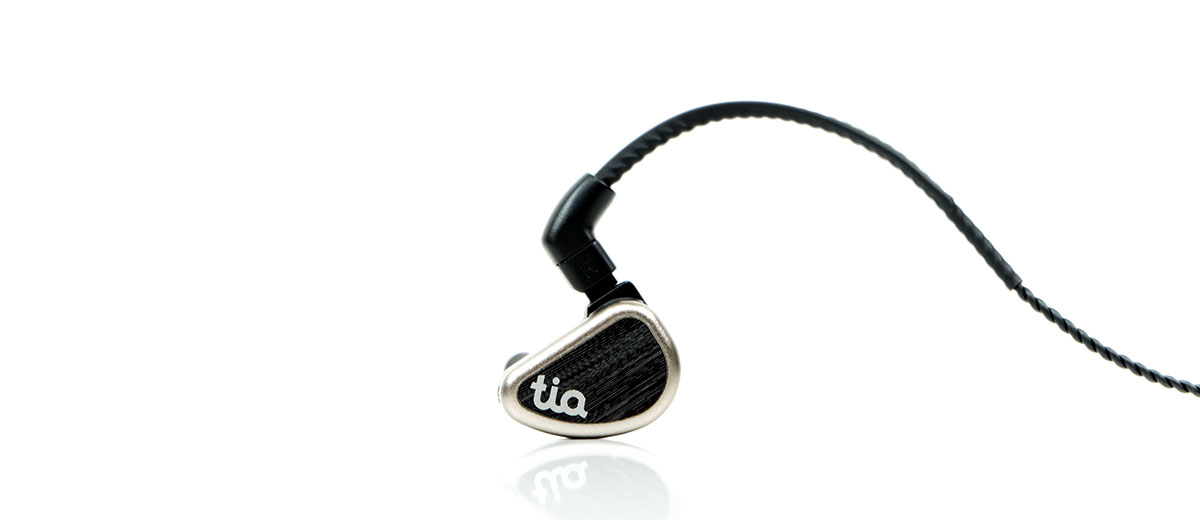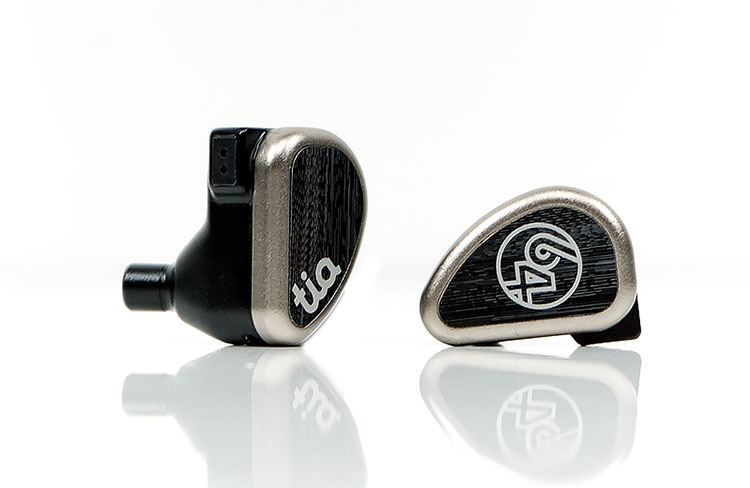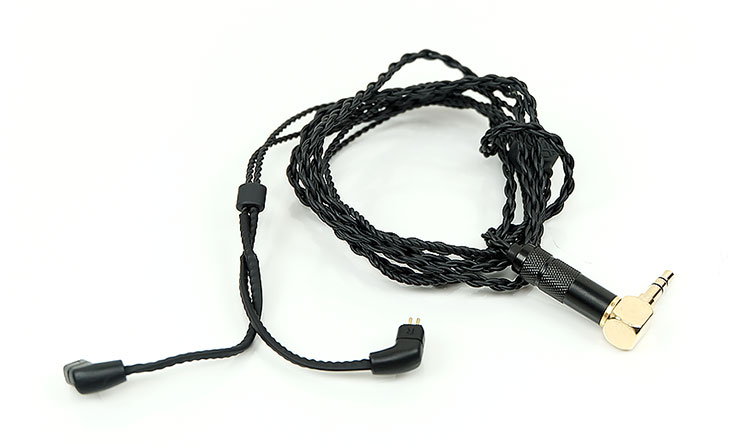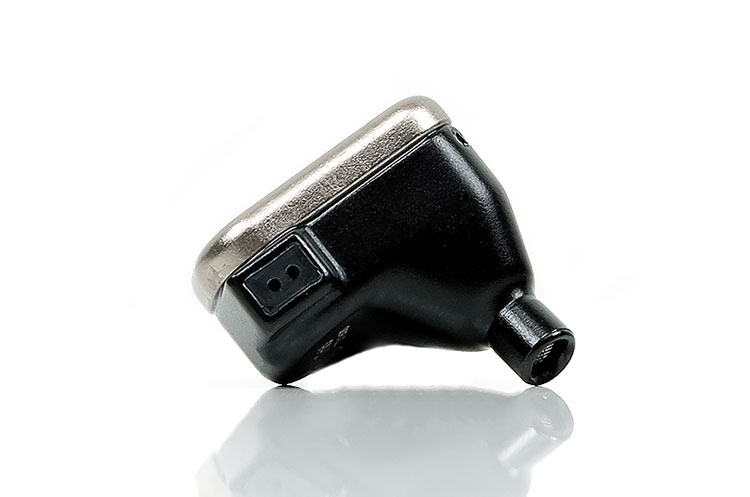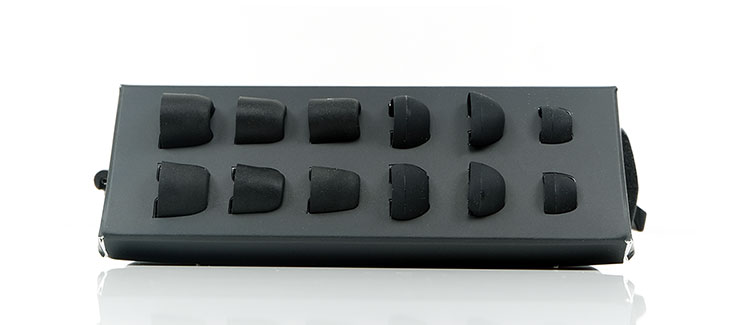The 64 Audio tia Trió™ is a hybrid triple driver universal monitor showcasing their leading technology including tia, LID, and apex. It is priced at $2299.
Disclaimer: The 64 Audio tia Trió™ sent to us is a sample in exchange for our honest opinion in this review. We thank the team at 64 Audio for giving us this opportunity.
To read more about 64 Audio products we reviewed on Headfonics click here.
Note, this 2-page review follows our new scoring guidelines for 2020 which you can read up on here.
We gave our out-of-the-box or initial impressions on the 64 Audio tia Trió™ back in March just before we headed off to CanJam Singapore.
During that trip, I decided to bring both the tia Trió™ and JH Audio’s Layla as my two monitors for referencing and just generally keeping myself from being bored senseless in the airports and flights. The source, by the way, was the Lotoo PAW Gold Touch which suited the 4-hour flight perfectly.
To be honest, I used the tia Trió™ for most of my trip. Not just because of the pressure build-up on the flight that the Layla could not deal with as a custom and the apex™ infused tia Trió™ could.
Rather, the more I listened to what the tia Trió™ could offer in terms of sound quality and how it paired with some of the tracks I had loaded for that weekend the more enamored I became with its sound signature.
How so? Read on, but let’s go over some of the key pointers first on this $2299 high-end monitor that make it rather unique.
Technology Inside
The tia Trió™ is part of 64 Audio’s expanding U-Series under their Audiophile category and sits somewhere in the middle of the pack with the U12t below and the U18t and the tia Fourté™ just above.
This is a hybrid triple driver universal monitor and showcases pretty much most of 64 Audio’s latest technology including tia, LID, and apex™. The configuration is 1 tia high, 1 high-mid, 1 back-vented 10mm dynamic driver for the mids and lows.
tia™
tia stands for tubeless in-ear audio. Basically, 64 Audio have opened up their balanced armatures and done away with tubes for phasing the signal. Instead, the open balanced armatures are placed inside a custom-tuned acoustic chamber with a single bore outlet.
The tia high driver is actually placed right into the single bore cutting down the distance of the signal to the ear dramatically and enhancing the quality of the high-frequency performance of the tia Trió™. The resulting output should be an enhanced perception of depth and a more open soundstage.
apex™
We actually introduced apex™ technology before in our A6 review back at the very start of 2017. apex™ is short for Air Pressure Exchange. Essentially the end goal is the same and that is to reduce the level of pneumatic pressure being delivered alongside sound pressure when inserting and using a monitor.
By reducing this type of pressure the eardrum gets less of a work-over. Thus, the potential of long-term hearing damage from using such devices is reduced allowing you to safely play music at a louder level than you normally can.
apex™ works its magic through a series of small modules that are designed to fit snugly into the actual shell of the CIEM or directly integrated into the universal version. The modules use a multi-cell studio-grade TPE material which they claim to be very effective and should yield a consistent level of results with the new technology when deployed over the long term.
FXC – Frequency eXtension Chamber
This, I believe is a piece of tech unique to the tia Trio. Basically, this is an acoustic chamber that is designed to even out the frequency response of the dynamic driver’s midrange performance.
Quite often in hybrid designs, the dynamic driver can dip into the mids leaving a slightly unbalanced or disconnected transition from the low-end into the mids. This chamber will prevent that dip on the tia Trió™and in turn tease out a much better vocal performance and enhanced instrumental accuracy.
LID
The full name for this feature is Linear Impedance Design. Those of you familiar with Custom Art’s FIBAE technology will get a fairly quick understanding of the bigger aim of LID from 64 Audio.
Basically, LID ensures that whatever the impedance level is on any given output you plug the tia Trió™ into it should not have a low-Z skew and should play true to its correct tuning. That means for those holding a 1st gen HiBy R6 Pro or a Shanling M2s ranging from 4Ω to 10Ω the tia Trió™ should sound accurate.
Design
Form Factor
This is a solid and very clean form factor in the same vein as the tia Fourté™ build quality. This is not a custom-universal acrylic build rather it is a 2-piece aluminum alloy shell design with matching faceplates.
It is fairly angular in its lines, however, the curving is buttery smooth. The top of the main body shell is also finished with a strong-looking flush 2-pin 0.78mm socket stem.
The nozzle is fairly long so a lot of emphasis is being placed on the tips finishing off the seal. The nozzle doesn’t have too much of a lip on it but seems to hold the tips in place fairly securely.
Just on the inside, there is a small silver gauze to protect against dirt and moisture getting in and blocking that tia high driver which is quite close to the entry point of the single bore.
Finishing
The finish is all black with a silver outer trim finish on the top of the plate with a lightly brushed charcoal/black central faceplate design. The labeling is tia on the left side and the 64 Audio logo on the right side.
This is a clean two-tone finish with zero bubbles and a very evenly applied trim. There is a small gap or groove between the faceplate and the main shell but by design rather than any shoddy finishing.
Cable & Connectors
The tia Trió™ uses a flush-mounted 2-pin 0.78mm socket and comes with a 4-wire 48″ detachable Silver-Plated Copper (SPC) cable. This is an over-the-ear design but with a slight angle for improved comfort and fitting.
Connectors
The sockets build is excellent by the way. Cable pins glide in smoothly and you can feel a small resistance once it locks in. This is not a system that you have to put too much pressure to insert or wiggle slowly to get out so I can’t see any potential pin-breaking issues arising from the tia Trió™ socket system.
Cable
The finishing on the stock cable has dramatically improved since I last used stock 64 Audio cables with a tight braided black jacket, hand-soldered 2-pin connectors, and a 3.5mm gold-plated connector. The 3.5mm jack is gold-plated and looks fairly durable.
There is a slight amount of memory retention in the cable, it does have some kinks but it is not a cable that gets overly tangled.
The microphonics performance of the cable is really good, almost dead silent below the split. It also comes with low-profile memory hooks that retain their shape with ease when manipulated so they will stay close to your ear which I tend to prefer.
Comfort & Fit
Tips
The tips are single-bore silicone and foams. Both come in small, medium, and large sizes. Would I have liked to have seen some hybrids thrown in for good measure or dual flange?
Each set of tips has its own unique isolation capability and sound signature. For sure, the foams will seal better than the silicone tips but some might like the more open sound of the silicones.
I have no issues with the level of comfort with the tia Trió™. I find the large foams to deliver the most secure fit compared to the large silicone tips which allow for a bit of movement by comparison.
The isolation is better than I expected when using the foams. My understanding is the integrated apex™ module used here is the M15 which is a bit more open than the M20 and isolates a little less.
I do prefer the M15 on the old A6 but I tend to use the denser sounding M20 on the A18. That’s more of a preference thing than anything else. The tia Trió™ is integrated so you cannot swap around the filters like the custom variants.
Accessories & Packaging
I guess I should not be surprised that in the space of two years, 64 Audio has upped its game in terms of professional retail packaging. When I first worked with them 5 years ago it was pretty much an element-proof carry case in a plastic bag with stickers. That was par for the course with custom monitor manufacturers ‘back in the day’.
Now we have a fold-out pro-level large black box with excellent graphical printing and inside a clean and well-organized accessory/monitor presentation. The difference between now and then is stark!
Inside you get a range of tips in both silicone and memory foam, their small carry case which I first saw back in 2017 with the A6/A12, and the cable/monitor in a separate space. On the left side, you get a short introduction regarding tia from the founder of 64 Audio, Vitaliy Belonozhko.
Carry case
This is the standard case they have been using for a few years now for both universals and customs. It is not quite as sturdy as the older bulkier case and I am not sure it is weather-sealed but it is smaller and more pocket-friendly.
The inside of the case is very different from the old peli cases and is customized specifically for your tia Trió™ monitors. At the base, you have a pillar for wrapping the cable, and at the top a small rubberized dual box container for the driver units. In between, you have space for the silica gel and anything else really that fits.
Underneath you also get an additional cleaning tool and shirt clip. If you got a custom monitor from 64 Audio you will see inserts for up to 4 modules with a small rubber pad that sits over the shells protecting them from knocks and bumps. Since the tia Trió™ module is integrated these inserts will be vacant.
Click on Page 2 below for Sound Impressions & Comparisons

